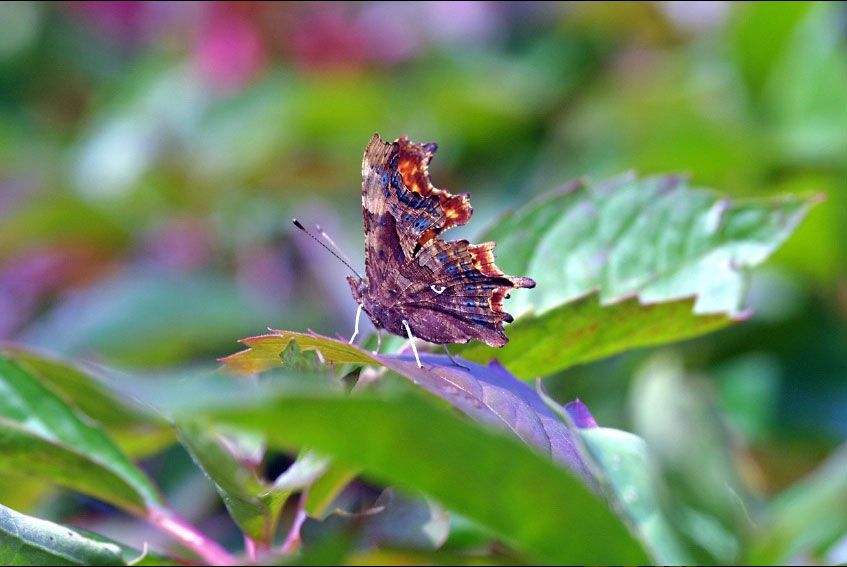
Christine Thuring, really Christine Thüring, has a background in field botany and restoration ecology, and a MSc. Horticulture from Pennsylvania State University’s “Centre for Green Roof Research“ (2005). Christine enjoys addressing the complexes of ecological design within the urban/ architectural interface, and has worked with green roofs in various capacities, including research, design, education, and communication. Christine is an active volunteer with Green Roofs for Healthy Cities, and helped develop the GRHC 401 course on plant and substrate selection for green roofs. She is quite the globetrotter, visiting friends and family in Europe and North America on a regular basis.
Christine is also our second Contributing Editor here on Greenroofs.com, and the focus of this interview in our “Meet the Editors” series. As our Student Editor since July 2004, she has been writing a biannual ramble in her column ‘Green Roofs on the Curve’ and her newsletter “Students on Green Roofs.” Her goal is to get students at all levels involved in the green roof movement by sharing research, projects and ideas through Guest Student Articles, the Student Forum, and by getting listed in the free Student Directory.
Linda: Christine, you have a Master’s in Horticulture, so you must have had an early love affair with plants and the green side of things. Please talk about early influences, and when did you encounter your first greenroof and did the concept immediately strike you as important, or did it develop over time?
Christine: Prior to specializing in green roofs, I worked for many seasons as a field botanist in aspects of restoration ecology and botanical inventory. Frequent engagements with species-at-risk (most often due to habitat loss) and habitat fragmentation by residential and commercial development became so frustrating that the close of my contracts always ended in tears. I’ve always had an ‘environmentalist’ streak in me, but it’s been my connection with the natural world that has consistently undercut my activist tendencies. To watch a natural community – places where frogs live and birds sing – get ploughed over for cookie-cutter housing is so painfully sad.
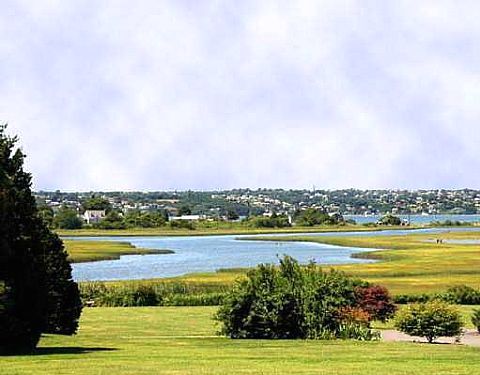
In 2001, I stumbled upon the green roof demonstration launch at Toronto City Hall. Since I was looking for work at the time, I was able to stay to the close of the event and ended up going for pints with Steven Peck, Brad Bass, Kaaren Pearce and a few others. I saw these folks quite frequently over the next year. I suppose the major turning point occurred when I joined Brad Bass on his annual “alma mater mecca” to Penn State, where I met my future advisors, Drs. Beattie and Berghage.
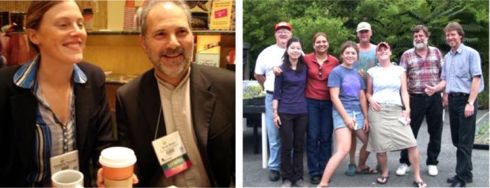
I was really excited by green roofs, although in retrospect I think I just needed to get into something more optimistic. It was good to take a breather from species at risk and talk about Sedums for stormwater management. After interning with Optigrün, one of Germany’s largest green roof franchises, I went to Penn State to do my MSc. Horticulture at the “Centre for Green Roof Research” (2005).
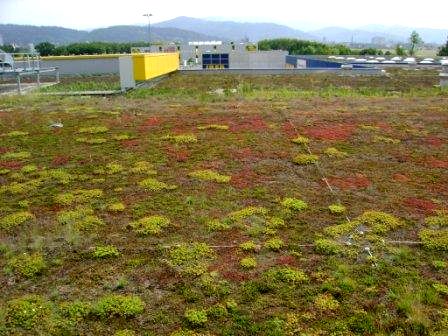
My Master’s research focused on extensive green roofs (with the question of “how low can you go?”), and it was only upon meeting Stephan Brenneisen at the first GRHC conference in Chicago (2003), that my background in plant ecology was given new inspiration and meaning. Looking back to these early influences, my identity as a plant person has developed in such a way that I’ve returned to my roots in plant ecology but from a platform that is better for my spirits.
Linda: You’re very much a “people person,” yet you’ve also devoted a lot of time to research and study. You’ve lived in the U.S, Canada, and Switzerland, and you’re fluent in German and I know have a good grasp of a few other languages. I know the German comes in very handy in our greenroof industry! Can you tell us a little about growing up Swiss-Canadian and how perhaps the experience helped set you up on your greenroof journey? And how do you believe your world travels have influenced your world views, at least on the design side of greenroofs?
Christine: My parents are both Swiss and although I grew up in Elmira, Canada, our family spent 3-4 months every 2nd summer in Switzerland, from infancy onwards. We thereby maintain close ties with our relatives, friends, dialects and culture. For some reason, I’ve never kicked the two year cultural cycle: I can’t be in North America for longer than two years before I need another European residency (usually Swiss, German or Austrian).
At some point, I really crave ubiquitous public timepieces (I never liked wearing a watch), delectable ice cream creations (“Coupes” in Switzerland, “Eis Becher” in Germany), and the cross-generational status quo of fitness. Of course the level of environmental awareness is always refreshing, and to see Best Management Practices as commonplace. I’m always impressed by the size of the population that truly honours, respects and knows nature. I love European cities, and the proximity an ease of travelling around, and have a soft spot for living in villages (especially in the Alps).
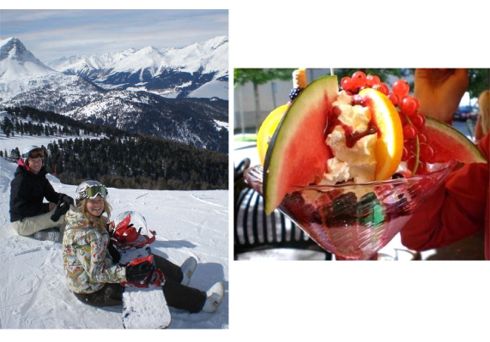
When I discovered extensive green roofs, the German rooting of the technology definitely made it feel like a good match for me. I grew up with several first languages (Swiss-German at home, English and French at school, German school on the weekend, ech), and have always enjoyed communicating across cultures. When I met Stephan Brenneisen for the first time in Chicago, it was glorious to find someone to talk Swiss German with over espressos (not to mention talking about his work and coming full circle in my own little world)!
In the last year, I’ve been offering translation and copy-editing support for colleagues in the German green roof market, which has been a very positive experience. The copy-editing relationship is a neat one, because it’s basically the native-speaker refinement of English papers written by German authors. Ultimately, this can determine whether a paper is accepted or rejected.
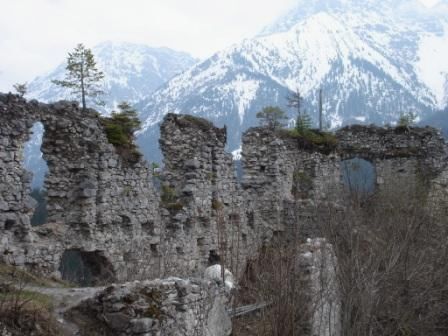
With regards to world travel, especially to developing countries, I’ve always felt strongly about helping the developing world side-step the blunders that industrial society has already accomplished. Backpacking around Central America and South India opened my eyes to the fact that development in these places is occurring, whether we help steer its direction or not. My experience from accessing the first green roof in India is summarized in an article from March 2009. With regards to design, these general observations make one thing clear: if living architecture is to achieve its full potential in today’s civilization, we need varied options and flexible alternatives that make the technology accessible.
Of course governing bodies need to be informed and motivated to do their part on behalf of the public they represent. But if at least part of the market could be steered towards supporting intuitive do-it-yourselfers, the benefits would be far more widespread (and interesting). For example, if a building owner in Mumbai wishes to clad the façade with climbers, ideally they could find a minimum of good information with relative ease, and have the intuitive confidence to make it happen rather than waiting for someone from far away to come and do it for them. Of course this “good information” must be based on current standards and enforceable regulations.
Linda: Your professor and mentor while at PSU, Dr. David Beattie, passed away in March, 2008. Can you share with us the experience of studying and working with him? And what did you learn most from Dr. Beattie as an advisor and colleague?
Christine: David Beattie was a classic horticulturalist with varied interests and a good scientific ethic. He was already dealing with cancer when I first met him in the summer of 2001, but always had a good energy to him. Must be the Irish! Fellow students in the Dept. of Horticulture perceived that he must be super fun to work with; he had an easy laugh that would echo down the hallways of Tyson Building. He definitely was good to work with, although it was far from fun and games. He was a good mentor by being available and by bringing big-picture wisdom to foggy moments.
Linda: You have a ton of zeal and everyone who meets you loves your energy! Aside from your obvious youth, to what would you attribute your passion and zest for life?
Christine: When I’m fully engaged in something I believe in, this tremendous energy radiates outwards from the depths of my soul. I am not really aware of it myself, although I’m now wise enough to recognize it when it reflects off those around me. Green roofs definitely inspire this energy, but the same can be said for bog restoration, self-propelled transportation, glaciers, surfing, and ice cream creations.

Aside from my youth (you realize I’m 33 now, yes?), I try to abide by some simple rules to be fundamentally happy. Among these: don’t take anything personally, always do your best, never make assumptions, simplify your problems, and say what you mean (mean what you say). I find putting fundamental philosophies into practice very rewarding, both personally and professionally.

Linda: As Student Editor, what would you like to see students more engaged in? Overall, what issues do you feel are important within our industry, and where do you see us heading in the next few years? What would you like to see changed or addressed?
Christine: I’m glad you ask this question! I’m inspired by students who are empowered and asking “˜real’ questions. In my early newsletters, I used to write about topics that weren’t being addressed by the green roof community, hoping that a student on the hunt for a meaningful thesis topic would bite. By “˜real’ questions, I mean those based by the fundamental principles of sustainability. Removing petroleum-based products completely from the roster, for example, or using water more creatively.
This interview is timely, actually, as I think the time has come for me to rescind the Student Editor role and pass it along. Being in the academic setting is a definite plus to this role, and since my graduation I feel my editorial focus has evolved somewhat. If any of our readers are interested in taking on the role of Student Editor, feel free to contact me: StudentEditor@greenroofs.com
Linda: Overall, what issues do you feel are important within our industry, and where do you see us heading in the next few years? What would you like to see changed or addressed?
Christine: I’m concerned about the risks that green-washing poses to the green roof industries that are emerging around the world. Like any industry with “green” in its name, we believe we’re doing good for the earth because we’re “green” by definition! However, if we think for a moment how a subject’s over-arching mission can be diluted, whittled and/ or adapted, then green-washing within the green roof industry can sacrifice not only the vision, but more importantly the integrity of the technology – and community – “˜s potential.
Taking this a step further, consider that many of our materials have high embodied energies, whether engineered media, modules, drain boards or even plants. When that energy depends on access to a fuel that is getting more and more expensive, the cost of green roofs will also rise. If we think green roofs are being value engineered out of projects now already, where will they stand when oil is at $250/ barrel? And where is the logic of installing green roofs if they support even just a small percentage of tar sands activity?
New regions still require regulated materials for green roofs, performance evaluations and design optimization, no argument there. But I think it is essential that we expand our focus and creativity to support the use of local materials as much as possible, beyond the enticingly cheap products subsidized from afar.
Further to this, I think we must challenge the limitations presented by human aesethetics with the practical advantages of function. For example, given that we recognize how much knowledge we lack on the ecology front, doesn’t it seem rueful to invest so much energy/ time/ money into removing plants that freely colonize green roofs? Those same plants may bring tremendous benefits, not only to the green roof but to a greater ecosystem but on a level of intricacy that we will never comprehend. Indeed, this very aspect of green roof presentation (and maintenance) is so striking in Europe, where weeds are treated with greater respect than in North America. One thing is true: human regard for what is “attractive” is very easy to manipulate. Just look at fashion: we’re back in the 80s for crying out loud!
Other themes for green roofs that I find important/ bearing great potential for a sustainable future include (very broadly): urban agriculture, mineral nutrient cycles, the magical rhizosphere, cost-benefit assessment, progressive policy-making, closed loop resource management, rainwater harvesting, low maintenance ecological design, passivhaus, do-it-yourself support, invasive exotics, etc.
Linda: You’ve collaborated on the design of a few greenroofs. People are constructing living roofs and green walls for so many reasons nowadays, but your interest has always been more on sustainable habitat and the reintroduction of flora and fauna – how important do you believe it is to design for biodiversity, and what should we as designers take into consideration?
Christine: On the one hand it is desirable to simply vegetate as many roofs as we can, regardless of system, plants or design. We know that extensive Sedum roofs do a great job of stormwater mitigation, so why not simply focus on getting the costs down, expand a skilled workforce and cover as much surface area as possible. Green roofs designed especially for biodiversity, by contrast, require more attention, consultation and planning. Fortunately, this is not an either-or scenario and there is room for all types of designs.
Fundamentally, I tend to refer to one consistent motto for this topic: diversity equals stability. The more diverse a system, the more resilient it is to collapse. This can apply to individual green roof design, and extend all the way up to market constituents (i.e. the constituent services available within an industry).
 Still, recalling the resemblance that pure Sedum roofs bear to deserts, adding small elements to enhance the site’s diversity doesn’t take much and can make a big difference to the ecological value of the site. Pieces of wood, topographic variation, and so on. Using locally available materials and seed would seal the deal. The key is to have the knowledge and support on-hand for site-specific inputs.
Still, recalling the resemblance that pure Sedum roofs bear to deserts, adding small elements to enhance the site’s diversity doesn’t take much and can make a big difference to the ecological value of the site. Pieces of wood, topographic variation, and so on. Using locally available materials and seed would seal the deal. The key is to have the knowledge and support on-hand for site-specific inputs.
One of the most exciting designers I’ve been blessed to collaborate with is Genevieve Noel, of MUBI Regenerative Consulting in Vancouver. A true ecological designer, with a degree in industrial design and a background in silviculture, Genevieve has developed a number of impressive living wall systems and is determined to use native plants wherever possible. One of her many brilliant projects, on Quadra Island, recreates the habitat on the roof space that permits the loading. The overall roof supports native sedum and mosses while deeper areas feature bulbs, ferns and perennials that were inventoried on site.
Linda: You’ve had a few jobs within the plant research/ecological horticulture/greenroof marketplace since graduating from Penn State. In a perfect world, what do you think the perfect job or career would be for you? And tell us about your new venture, Green Roof Safari – it sounds fascinating, and seems a perfect fit for your talents!

Christine: I really enjoyed working for NATS Nursery in Langley, B.C., where I had one of the longest (but perfect) titles ever: Resident Ecologist and Green Roof Specialist. Being new to the Pacific Northwest, working for a native plant nursery was a fantastic way to become familiar with the flora! I got to experiment with plants on the green roof trial facility, monitored the plant experiments for the 6 acre Vancouver Convention Centre green roof, and assembled plant lists for everything including exterior living walls, green roofs, biofiltration, all types of wetlands, and roadside restoration. I was very happy at BCIT, too, which offered a nice mix of education and research, not to mention inter-disciplinary goodness. At BCIT’s Centre for Architectural Ecology, directed by the fabulous Maureen Connelly, I did everything from project coordination (UN World Urban Festival, see below) to research (Elevated Research Platform), and also discovered my capacity for marketing and communications. I’m not sure what my perfect job or career would be; I think I’m finding out as I go along.
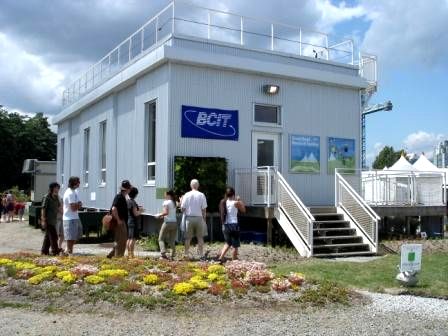
In early 2008, I decided to explore a new path and established a small business, Chlorophyllocity. Just as the name combines various words- chlorophyll, city, velocity – Chlorophyllocity’s scope is intentionally diverse, which permits a great range for collaborations and other relationships. In my first year, for example, Green Roof Safari ran its first study tour, several projects slowly advanced closer to reality, I supported three green roof colleagues with translation and copy-editing of exciting new research papers, contributed my own research interests as a panelist for “Future Directions for Green Roof Research” at the GRHC conference in Baltimore, did some field work, and got some secret experiments up and running on my balcony. I’ve never considered myself a business woman, so we’ll see what happens.

At the moment I’m very excited about Green Roof Safari, which is a collaborative project with Jörg Breuning. Green Roof Safari’s goal is to provide participants with the scope, information, and contacts to bring broadened horizons back to their hometowns and effect positive change. The unique service that Green Roof Safari supplies is access to a diversity of (otherwise inaccessible) green roofs in a condensed time frame. We also arrange meetings with local experts to learn about success stories in policy, research and design from direct experience.
These study tours are designed to equip participants with knowledge, scope and contacts, but also reinforce the spirit for sharing and community that is key to sustainability. Our next tour runs from September 14 – 19, 2009.
Linda: Is there one particular project which is your favorite, or maybe particularly important in your eyes?
Christine: I’m deeply impressed by the innovative development going into wet roofs, such as projects by Gaia Institute in New York.
Linda: I think you are a passionate advocate for respecting nature and the built environment, and have a bright future ahead of you. You’re just beginning to conquer the world of greenroofs and sustainable design! If there was one thing that you’d like people to know about you that hasn’t been mentioned or how you see the world, what would that be?
Christine: I love bogs and believe their protection and restoration represents a key to our global environmental plight. Carbon sequestration aside, bogs (and other wetlands) are amazingly rich biologically, and do so much for our air and water. Over the summer of 2007 I volunteered my earlier experiences in bog restoration to the Burns Bog Conservation Society, supporting and guiding a summer student in developing a long-term experimental design in the lee of the largest domed peat bog in western North America. Botanical inventories from permanent vegetation plots permit the correlation between natural succession and the changing water table.
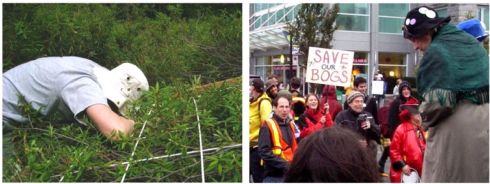
When in Vancouver, I try to join the “˜Crazy Boggers’ work parties at Camosun bog on Saturday mornings. I’ve been experimenting with the propagation of peat moss, with the dream of establishing bogs on rooftops. Stay tuned!
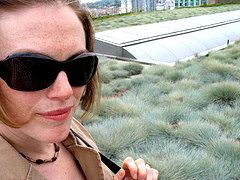
Linda: Thanks, Christine, for sharing, and good luck in all your pursuits. If you’d like to contact Christine Thüring, otherwise sometimes known as The Green Roof Gal, email her at: StudentEditor@greenroofs.com.
Christine is currently in Stuttgart-Nürtingen, Germany attending the International Green Roof Congress 2009 through May 28, 2009, representing her varied interests along with Greenroofs.com. Unfortunately, at the last moment we had to cancel our trip but Christine will do a fine job of reporting with an article after the Congress, so look for one coming soon!
Next up in “Meet the Editors” series is Kelly Luckett, LEED AP, formerly “The Roving Exhibitor,” president of Green Roof Blocks and St. Louis Metalworks Company, and now simply known as “The Green Roof Guy.”
Happy Greening Everyone,
~ Linda V.
 Greenroofs.comConnecting the Planet + Living Architecture
Greenroofs.comConnecting the Planet + Living Architecture





Sky Gardens » Blog Archive » Greenroofs & Walls of the Worldâ„¢ Virtual Summit 2011 Episode 25: Biodiversity and Greenroofs Panel Presentation
[…] for us about her visits to Paris, Germany, and India, and London, among others.  Read my “The Swiss-Canadian Green Roof Gal: An Interview with Christine Thüring” of May 24, 2009 to learn a little more about her earlier […]